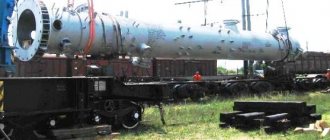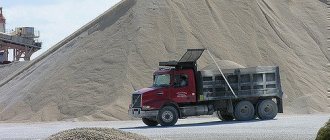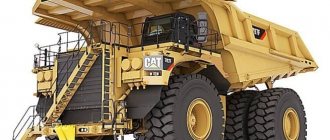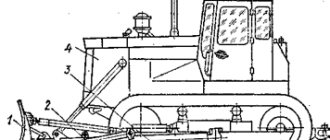Transportation of hazardous chemical cargo requires the contractor to have certain skills and abilities, as well as an integrated approach to solving assigned tasks. Transportation of hazardous substances involves special conditions, because most chemical reagents (acids, alkalis, aqueous ammonia, soda ash, potassium chloride, phenol and others) are potentially dangerous to human health, the environment, and property. Such substances belong to the category of especially dangerous goods, so it is better to trust their transportation to a specialized company. Only specialists will be able to correctly develop a safe transportation scheme and take into account possible risks.
General rules for the transportation of chemical cargo
Transportation of hazardous substances requires the use of a special labeling system and additional documentation. Chemical cargo can only be transported using equipped vehicles.
Each flight is accompanied by cards to decipher the emergency code. They indicate in advance the procedure for carrying out measures to eliminate emergency situations along the way and their consequences.
Transportation of chemical cargo by road must take into account the characteristics and properties of the transported substances as much as possible. They may be hazardous or semi-hazardous, flammable and explosive, poisonous and radioactive, caustic, corrosive or infectious. Depending on the chosen category, the carrier must comply with a number of established requirements:
- Use only those specialists who have been trained and have experience working with chemical cargo;
- Have transport permits available;
- Use only equipment equipped for transporting chemicals;
- Choose the optimal route;
- Perform mandatory tank cleaning procedures upon completion of a voyage.
https://youtu.be/-0opHoNkgsU
Driver requirements
Only drivers with at least three years of experience driving a vehicle of this category can carry out hazardous chemical cargo Before each flight, a mandatory safety briefing is provided regarding the transportation of this particular type of cargo. This stipulates the behavior of the driver in the event of an accident, detection of a vehicle malfunction, leakage, damage to the tank, fire and other unforeseen situations.
If accompanied, the forwarder must have documentary evidence of permission. Loading and unloading of dangerous chemical cargo is permitted only with the assistance of a specialist with at least 3 full calendar years of experience. In case of direct contact with containers or hazardous substances, chemical protective equipment is required.
OCCUPATIONAL SAFETY REQUIREMENTS IN EMERGENCIES
4.1. The consignee's (shipper's) organization develops emergency action plans, handing it over to the driver or attendant for each shipment, and assigning special emergency teams. 4.2. The emergency action plan for eliminating the consequences of accidents establishes the procedure for notification, arrival, actions of the emergency team, a list of necessary equipment and tools and the technology for their use. 4.3. If you get into a motor vehicle accident, you must: - call a traffic police inspector; — notify management and call an emergency team. 4.4. The actions of the emergency team include: - detection and removal of scattered, spilled cargo; — provision of first aid; — if necessary, evacuation of drivers and accompanying persons; — carrying out decontamination and disinfection; — neutralization of special clothing. — notification of the consignee about the accident.
List of required documents
When transporting dangerous chemical goods, it is necessary to prepare in advance, properly execute and submit to the driver a list of documents. Interstate transportation requires the European Agreement on the International Transport of Dangerous Goods by Road ADR - ADR, certificates, a passport of the transported substance marked “Dangerous Goods”, a certificate of driver approval for transportation, permission from the Ministry of Internal Affairs for the transportation of such goods, special route sheets. Paperwork is included as a separate item in the rules for the transportation of dangerous goods.
Transport requirements
Transportation of liquid chemical cargo is carried out only in especially durable chemical tanks. The material from which the tank is made is coated with a special anti-corrosion compound and is able to withstand prolonged exposure to oxidizing and caustic chemicals. When transporting flammable reagents, containers with heat-insulating properties are used. It is important to remember that some cargo is very susceptible to temperature conditions during transportation, so it is important to maintain constant conditions, and also not to forget to check the functionality of safety valves to avoid leakage.
The fuel tank of specialized vehicles is as far away as possible from the electrical wiring, battery and engine. The bottom and sides, auxiliary equipment and pipelines must have additional protection. Cars must be equipped with a grounding device to protect against lightning discharges; the fuel tank is armored and moved to a closed container. A vehicle can only have one trailer or semi-trailer.
Transportation of sulfuric acid
Sulfuric acid is a highly hygroscopic oily liquid that can cause very severe burns and requires special storage and transportation conditions.
Sulfuric acid is transported by rail or special tanks for transporting acids (chemical tanks).
Not only the transportation of sulfuric acid, but also its storage should be carried out only in special containers made of steel or special steel. Storage containers can be unlined, but storage in containers lined with any acid-resistant material, such as acid-resistant brick, is recommended.
Improved sulfuric acid is transported in railway tanks made of acid-resistant steel with the application of stencils “Improved sulfuric acid”, “Dangerous”, as well as a postscript stencil.
Technical sulfuric acid of the 1st and 2nd grades, tower and regenerated acids are transported in railway sulfuric acid tanks, as well as in steel containers, steel barrels in accordance with GOST 6247.
Oleum is transported in special oleum tanks from the sender with insulation or a heating device with the application of stencils “Oleum” or “Oleum Improved”, “Dangerous”, as well as a registration stencil.
Technical sulfuric acid is transported by rail in tanks and by road in containers and barrels in accordance with the cargo transportation rules in force for each type of transport.
The filling of tanks, containers and barrels is calculated taking into account the full use of their capacity and the volumetric expansion of the product with a possible temperature difference along the route.
Technical sulfuric acid of the 1st and 2nd grades, improved and technical oleum, tower and regenerated acids must be stored in containers made of steel or special steel, both unlined and lined with acid-resistant bricks or acid-resistant material.
Improved sulfuric acid should be stored by the consumer in clean, hermetically sealed containers made of stainless steel or containers made of steel grade St3 according to GOST 380, lined with acid-resistant tiles or bricks.
Battery sulfuric acid is poured into special sulfuric acid tanks with the application of stencils “Battery sulfuric acid”, “Dangerous”, as well as a stencil of registration, into containers made of stainless steel grade EI-448 in accordance with GOST 5632-72 and into containers protected inside with fluoroplastic or glass bottles. Glass bottles must be closed with ground glass or screw-on polyethylene or plastic caps.
Before filling, tanks must be thoroughly inspected from the inside and cleaned of dirty residues.
Choosing the optimal route
At the stage of developing and coordinating a route for the transportation of chemical goods, specialists from the transport logistics department necessarily draw up several equivalent routes, from which the optimal one is then selected. The selection criteria include the length, the presence of restrictions on the passage of vehicles of the used carrying capacity, the likelihood of traffic jams, the intensity of traffic on the route and other important nuances.
Particular attention is paid to measures to clean tanks of chemical cargo residues. This is necessary to ensure that potentially hazardous reagents do not accumulate and come into contact with substances transported next time.
If you want to completely protect yourself from unforeseen situations and entrust the safety of your cargo to experienced specialists, pay attention to the offers of our company. We have been successfully operating in the market for more than 20 years, which has allowed us to accumulate certain experience and study the infrastructure of the road freight transportation market. Our specialists are constantly trained and improve their professional level, which allows us to stay afloat, successfully withstand competition and solve the most complex complex problems!
Tank containers for transporting acids
Transportation of acid by trains, as well as by road and water transport, can be carried out not only by tanks, but also by tank containers. Thanks to a reliable steel frame, such containers are highly reliable, and most importantly, they are suitable for multimodal cargo transportation. This means that if the planned route requires a change in modes of transport, the carrier can easily do this without repacking products, building supply routes or searching for special sites.
To rent tank containers for acids and get expert advice, call the number. We work daily from 9:00 to 18:00.
Hydrochloric acid is obtained: 1 Synthetically from chlorine and hydrogen formed by electrolysis of table salt or by passing a mixture of chlorine and water steam through a layer of hot coal. 2 The effect of sulfuric acid on table salt. 3 By passing steam and sulfur dioxide through agglomerated table salt. 4 Absorption of hydrogen chloride formed during the chlorination of organic compounds and in some processes of inorganic technology. The following types of hydrochloric acid are produced: Synthetic hydrochloric acid containing 31% hydrogen chloride and impurities of iron, arsenic and heavy metals. Transparent liquid from colorless to yellow, density 1.154 g/cm3. Technical hydrochloric acid of the 1st and 2nd grades, both grades contain at least 27.50/0, hydrogen chloride and impurities of sulfuric acid and iron; transparent yellowish liquid, density 1.139. Inhibited hydrochloric acid contains 19-25o/v hydrogen chloride, 0.8-1o/o inhibitor PB-5 (to impart anti-corrosion properties) and arsenic salt. The color of the acid is light brown, density 1.093-1.124. Hydrochloric acid from waste gases of organic production, containing at least 27.5 o/o hydrogen chloride and iron impurities, free chlorine. Transparent yellowish liquid, density 1.139. Acid from waste gases of organic production, inhibited, containing 18-22o/o hydrogen chloride and 0.8-1.2o/o inhibitor. Light brown liquid. Hydrochloric acid for the food industry, containing at least 31o/o hydrogen chloride and impurities of sulfuric and sulfurous acids, free chlorine, etc. Transparent liquid, slightly yellowish tint is allowed. Used for the production of chlorides of barium, zinc and other metals and organic bases; in hydrometallurgy, electroplating, and oil production; in the production of sugar, organic dyes, acetic acid and other products; in the textile industry, etc. The overall scale of use of hydrochloric acid is very significant and has been continuously increasing. (Data for 1968.) Hydrochloric acid is transported synthetically, technically and from waste gases in rubberized steel sealed tanks and barrels, in faolite containers, as well as in glass bottles with a capacity of 40 liters. Inhibited hydrochloric acid is transported in steel railway tanks or tank trucks painted on the inside with chemically resistant enamel and varnish. Food grade hydrochloric acid is poured into glass bottles with a capacity of up to 30 liters and closed with clean wooden stoppers. Previously, transporting 25 tons of hydrochloric acid required at least five covered two-axle wagons and 1,140 bottles in wicker baskets or crates with soft packaging. The special equipment of five cars required spending about 9 m3 of lumber and timber. Therefore, in the mid-30s, 2- and 4-axle tanks were built to transport hydrochloric acid. Two-axle tank for transporting hydrochloric acid with a capacity of 21 m3 A two-axle tank for transporting hydrochloric acid with a carrying capacity of 25 tons with a boiler with a capacity of 21 m3 was built on the basis of a 2-axle oil and gasoline tank of the 1931 model https://www.scaletrainsclub.com/board/vi ... =46&t=1846. The internal diameter of the tank boiler for transporting hydrochloric acid is 2,200mm, and the total length is 5,990mm. The boiler consists of three shells 8 mm thick and two bottoms of the same thickness; At the top in the middle part of the boiler there is a cap with a diameter of 1,300 mm, made of 6 mm sheet. The tank boiler is covered with a 5mm thick layer of rubber. The same coating is available on the outside of the hood and on the cylindrical part of the boiler near the hood. The tank frame is standard like that of biaxial oil and gasoline tanks. A tank for transporting hydrochloric acid with a volume of 42.3 m3 In the 1930s, a tank for transporting hydrochloric acid was built on the basis of a 4-axle 50 m3 petroleum tank of the 1936-41 model https://www.scaletrainsclub.com/board/vi … =46&t=1680 with a lifting capacity of 50 tons and a volume of 42.3 m3. The boiler is made up of five shells 10 mm thick and sheets 1,800 mm wide, an armor plate 10 mm thick and 1,900 mm wide, and two stamped bottoms 10 mm thick. The internal diameter of the boiler is 2,380 mm, and its total length is 9,600 mm. At the top in the middle of the boiler there is a cap with a diameter of 1,500 mm with a thickness of vertical walls of 6 mm and a bottom of 7 mm.
Attachment: Comment to the file: Tank for transportation of hydrochloric acid with a volume of 42.3 m3 File19432_JPG1.JPG The entire internal surface of the boiler is covered with a layer of rubber 5 mm thick to protect against the action of hydrochloric acid on the metal walls. The same coating is available on the outside of the hood and on the cylindrical part of the boiler near the hood. The outer covering on top is protected by wooden planks reinforced with clamps and bolts. Tank car for transportation of hydrochloric acid with a capacity of 46 m3 model 15-1403 A tank car for transportation of hydrochloric acid with a capacity of 46 m3 model 15-1403 has been built since 1964. Loading capacity of the tank is 54 tons, container is 22.3 tons. This tank was built in large batches. To protect against the aggressive action of hydrochloric acid, the inner surface of the boiler, as well as its outer part in the immediate vicinity of the hood, is gummed with a 5mm layer of rubber. Inhibited hydrochloric acid can be transported in such tanks without lining the inner surface of the boiler. The main components of the tank are a four-axle platform with a base of 7800 mm, designed in 1962, and a boiler with two hatches. The platform kit includes a frame, two biaxial trolleys of the TsNII-Kh3-O type with plain bearings, two automatic couplers of the SA-3 type, an automatic brake, a parking brake, an internal (portable) ladder, and an external ladder. Attachment: Comment to the file: Tank for transportation of hydrochloric acid model 15-1403 built in 1966 Salt kit 15-1403 post 1966 ZhZTM..JPG..JPG Attachment: File19091.JPG2.JPG MAIN PARAMETERS OF THE TANK; Load capacity, ………..54t Boiler capacity, total………………….46m3 useful ……………….45m3 Container, ………………..22.3t Frame length, according to front sheets… …..10800mm along the clutch axes of the automatic coupler ………………..12020mm Frame width (outer) along the pivot beams, ………. …3000mm Distance between the pins of the bogies (base), ……7800mm Internal diameter of the boiler, ….2400mm 'Total length of the boiler, ……. 10514 mm Height of the automatic coupler axle to the rail head, ……………1040—1080 mm Load, from the axle to the rails ………….22.3 t per 1 linear line. m of track…………6.34t Dimensions. . …………02-T Tare coefficient …………0.42 Boiler weight, ………………7163 kg The boiler kit includes a protective shield, a drain and fill device, and a safety valve. The tank frame of a welded structure consists of a longitudinal (spinal) beam and two transverse (pivot) beams on which the boiler supports are placed. The boiler is made of rolled steel grade St. 3 thickness 10 - 12mm. In the upper part of the boiler there is a cap on which a manhole with a spherical lid with a diameter of 585 mm is installed, a technological hatch with a diameter of 462 mm on the lid of which there is a pipe for filling and draining the product, a safety valve for excess pressure (over 3 kg/cm2) and a pipe for measuring the filling level product. The boiler is secured to the frame with four clamps, as well as feet that protect against longitudinal displacement. The product is drained and filled through a drain and fill pipe. For ease of maintenance of the tank there are internal and external stairs. The acid is drained by sucking it out of the boiler with the manhole cover open. Attachment: File19101.JPG1.JPG











